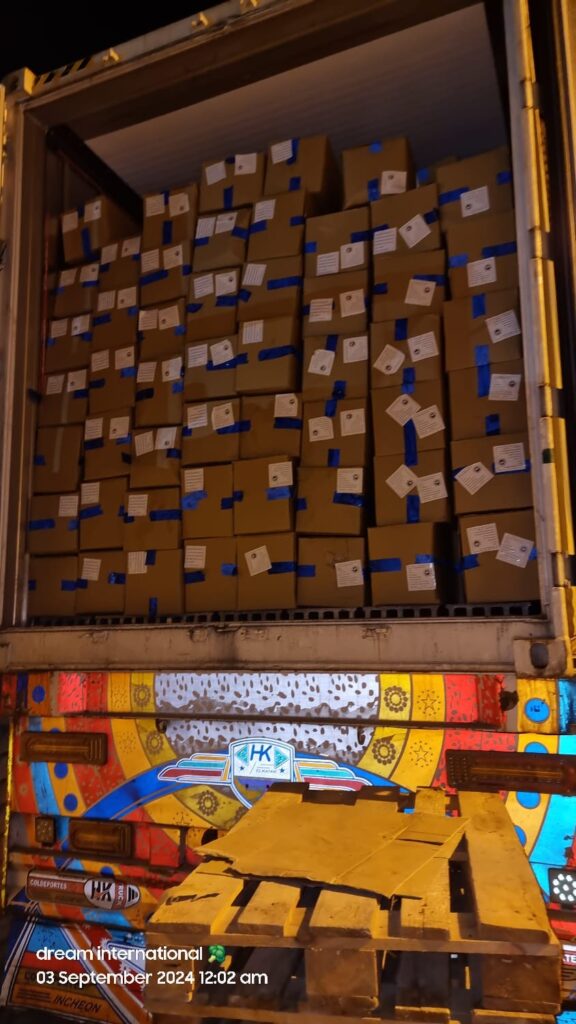Broccoli’s Role in Global Agribusiness: Production, Export, and Market Trends
Mostafa Adel
Broccoli, with its rich nutrient profile and versatile culinary applications, has emerged as a key player in the global agricultural landscape. The vegetable, which was once niche in certain regions, has become a staple crop for many countries due to its expanding demand and high export potential. This article explores the latest trends in global broccoli production, consumption, and export, drawing insights from multiple sources.

Global Production Overview
Broccoli production has seen remarkable growth over the past decades, with China and India leading the way. China remains the top producer, contributing around 11 million tons of broccoli annually, which is roughly 43% of the global output. India, benefiting from its vast and varied climate, follows closely with 9 million tons, contributing about 35% to the global market.
- China leads the world in broccoli production, contributing over 10.7 million tons annually. This is largely fueled by local demand, as broccoli is a common ingredient in Chinese cuisine.
- India, producing about 8.8 million tons, has also become a key player. The country’s varied climate enables year-round production, making broccoli a profitable crop in both domestic and export markets.
- United States comes in third, with production around 1.3 million tons. California remains the largest producer due to its favorable climate. In fact, California produces over 90% of U.S. broccoli, with significant portions exported, especially during the colder months when production slows in other parts of the world.
- Spain and Mexico are also noteworthy. Spain produces 746,000 tons annually, serving as one of Europe’s major suppliers. Mexico, on the other hand, not only grows broccoli for domestic consumption but also exports extensively to the U.S., contributing 51% of broccoli imports into the U.S. as of 2023.

Broccoli’s Export Market: Growing Demand Globally
Broccoli’s rise in the export market has been driven by its health benefits, convenience, and growing popularity in various cuisines around the world. The global broccoli export market is valued at over USD 3 billion annually. Spain, one of the major exporters, ships fresh and frozen broccoli to countries across Europe and beyond, with total export volumes exceeding 100,000 tons in 2023.
Mexico, with its proximity to North America, is another significant exporter, primarily sending fresh broccoli to the U.S. and Canada. The United States exports roughly 20% of its broccoli production, mainly to Canada, Mexico, and Asia, where the demand for both fresh and frozen vegetables is steadily increasing.
Tridge data indicates that several countries, including Guatemala and Peru, have expanded their broccoli production for the frozen vegetable market, allowing them to capitalize on rising consumer preferences for easy-to-prepare, frozen vegetable options

Factors Influencing Broccoli Production and Export
Several key factors affect the production and export of broccoli globally. Climate remains a dominant force, as broccoli thrives in temperate climates with moderate temperatures. California’s droughts and Spain’s unpredictable weather patterns have impacted production levels in recent years, causing concern for future yield stability.
Agricultural technology is another critical factor. Countries with access to cutting-edge farming techniques, such as precision agriculture and advanced irrigation systems, enjoy higher yields and improved crop quality. In Spain, the adoption of these technologies has significantly increased productivity, allowing growers to meet rising export demands. Moreover, improvements in post-harvest handling, cold chain logistics, and storage have extended the shelf life of broccoli, making it easier to ship to distant markets without compromising quality.
Consumer health trends also play a substantial role in the demand for broccoli. As more people prioritize nutrition, broccoli—rich in vitamins C and K, fiber, and antioxidants—has become a staple in health-conscious diets. The growing popularity of plant-based eating has further boosted broccoli consumption worldwide.

The Frozen Broccoli Sector: A Rising Star
The frozen broccoli market is experiencing rapid growth, driven by demand for convenience and longer shelf life. According to Tridge, Spain and Mexico have capitalized on this trend, becoming significant suppliers of frozen broccoli to Europe and North America.
Frozen broccoli exports are increasing due to its long storage capabilities and the shift towards quick, nutritious meal options in both household and commercial kitchens. As this sector continues to grow, it offers new opportunities for producers in developing nations, who are ramping up production to meet the needs of global buyers looking for affordable, high-quality frozen vegetables.
Conclusion: Broccoli’s Future in Global Agribusiness
Broccoli’s evolution from a regional vegetable to a global commodity reflects larger trends in health-conscious eating and the modernization of agriculture. Countries that can provide the right climatic conditions, invest in technology, and adapt to consumer preferences will continue to dominate the market.
In the coming years, China, India, the United States, and Spain are expected to remain the top producers, but emerging players like Mexico, Guatemala, and Peru are poised to carve out larger shares in the export market, particularly in the growing frozen broccoli sector.
As the global demand for nutritious, versatile, and convenient foods increases, broccoli’s place in agribusiness—and in diets worldwide—will continue to strengthen.
Best Regards
Mostafa Adel
Last updated November 24, 2024